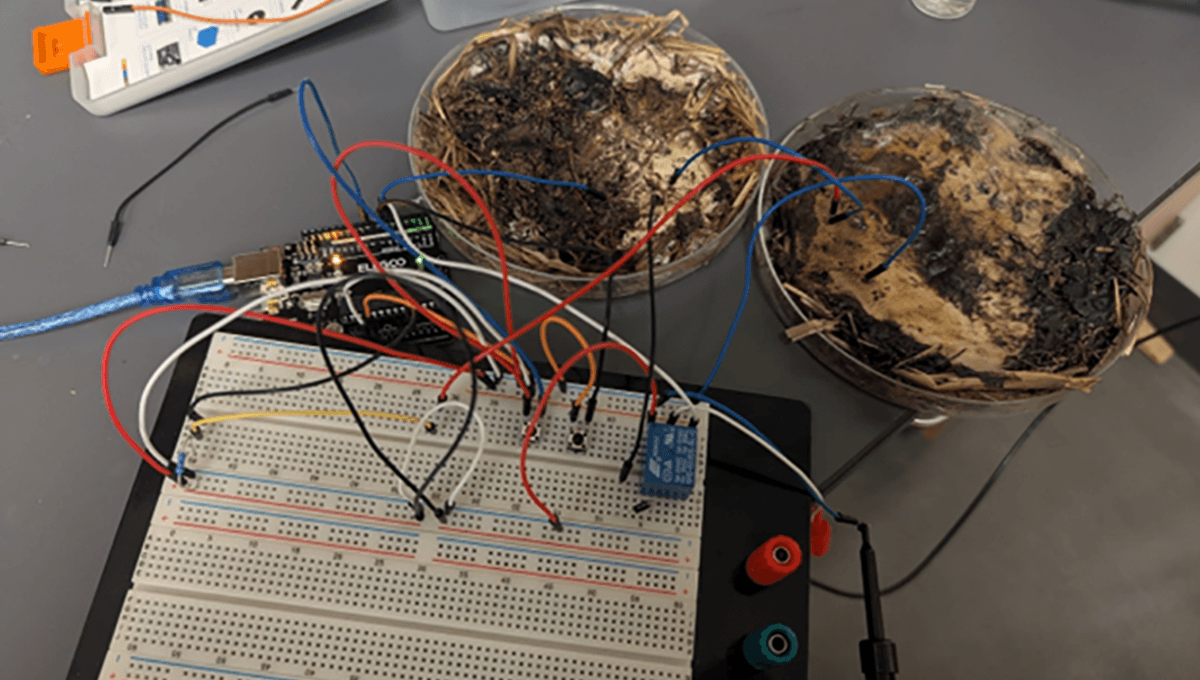-
Feed de notícias
- EXPLORAR
-
Páginas
-
Blogs
-
Fóruns
Mushrooms Could Beat Metal For Large-Scale Memory Storage And Processing

Mushrooms Could Beat Metal For Large-Scale Memory Storage And Processing
A popular mushroom species can be trained to remember past electrical states, allowing it to act as both a memory device and data processor known as an organic memristor. Scaling performance may be a challenge, but theoretically, the discovery opens the way to computers that consume fewer resources and might eventually be cheaper and certainly easier to dispose of.
The rest of this article is behind a paywall. Please sign in or subscribe to access the full content. Arthur C Clarke famously said, “Any sufficiently advanced technology is indistinguishable from magic.” On that basis, one day there could be a different kind of “magic mushroom”, not one that contains psilocybin, but one that can beat the most powerful supercomputers. The enormous rise of data centers to power AI is set to account for a significant part of the growth in electricity demand. Consequently, it is the difference between the rough plateauing of fossil fuel burning over the last two years, and rapid reductions. While some people argue about whether we need these products, others are working on less energy-hungry ways to process information, including some quite out of the box. There have been claims, albeit somewhat controversial, of mushrooms having a sort of language, based on the sending of electrical signals amongst them, with the repetition of certain signals compared to words. "Being able to develop microchips that mimic actual neural activity means you don't need a lot of power for standby or when the machine isn't being used," Dr John LaRocco of Ohio State said in a statement. "That's something that can be a huge potential computational and economic advantage." "One of the key strengths of memristors is their capacity for efficient and self-adaptive in situ learning, which is critical for applications in robotics and autonomous vehicles," LaRocco and co-authors write. "In memristor-based neural networks, the devices can adjust their resistance based on previous inputs, allowing for a form of analog learning that closely resembles the synaptic behavior in biological systems." LaRocco and co-authors grew shiitake mushrooms (Lentinula edodes), dehydrated the mycelium, and connected samples to electric circuits, which were used to apply a range of voltages and frequencies, using both square and sinusoidal waves. The samples’ resistances changed, depending on the inputs, providing a memory. "We would connect electrical wires and probes at different points on the mushrooms because distinct parts of it have different electrical properties," LaRocco said. "Depending on the voltage and connectivity, we were seeing different performances." The team’s mushroom storage devices were found to be able to switch electrical states almost 6,000 times a second. The accuracy was around 90 percent, remarkable for such an unusual system, but showing there is still work to be done to make a practical storage device. Higher frequency signals led to reduced performance, but this could be compensated for by adding more mushrooms. "Mycelium as a computing substrate has been explored before in less intuitive setups, but our work tries to push one of these memristive systems to its limits," LaRocco noted. Besides needing less electricity to power them, fungal electronics keep electrical waste low – mostly they biodegrade, if no one eats them first. Not needing rare earths, which are increasingly becoming a source of geopolitical conflict, is another bonus. Miniaturization is essential if substantial computing projects are not to take up unfeasibly large amounts of land, but the team thinks this is something they can work on. The authors even note that shiitake mushrooms are known to be radiation-resistant, so the devices made from them would be suitable for space exploration. Mushrooms might go where no man has gone before. Shiitake mushrooms were chosen over other species because their popularity makes for an abundant supply, and their porous structure enhances the electrochemical performance of supercapacitors or memristors made from them. "Everything you'd need to start exploring fungi and computing could be as small as a compost heap and some homemade electronics, or as big as a culturing factory with pre-made templates," said LaRocco. "All of them are viable with the resources we have in front of us now." We do have some questions, however. For one thing, if you run a large language model on a mushroom-computer, does it still count as AI, or is it a biological intelligence? For another, what happens if psilocybin-rich mushrooms are used instead of shitakes? Would we have a computer that really hallucinates? We’re also not sure what it means for the old description of someone as being “a mushroom” because they were “kept in the dark and fed BS.” The study is published in PLoS ONE.


